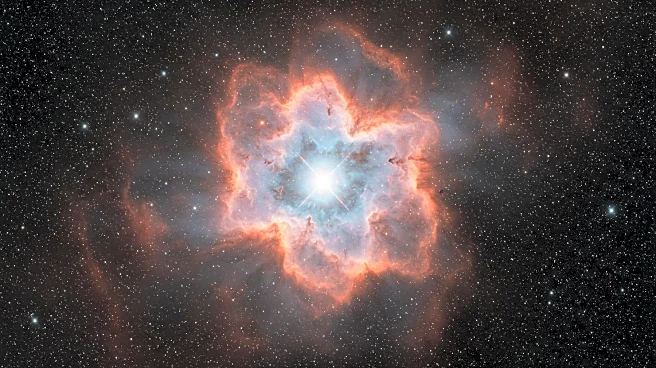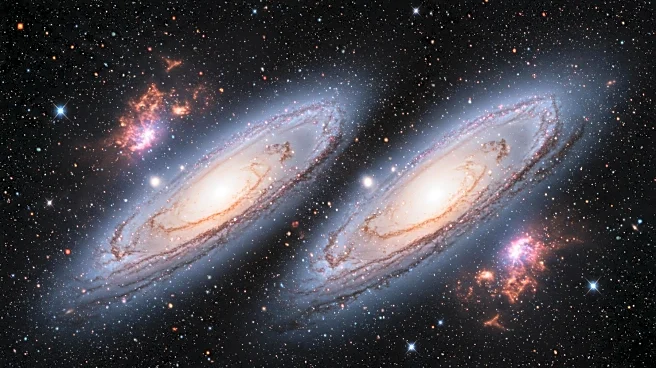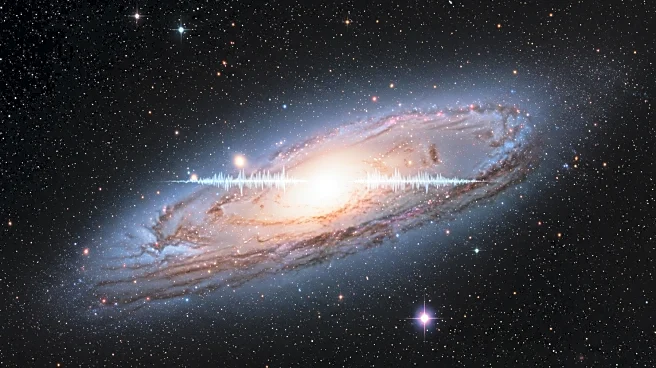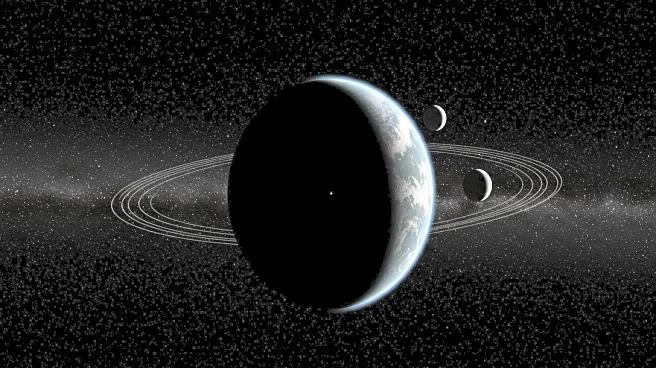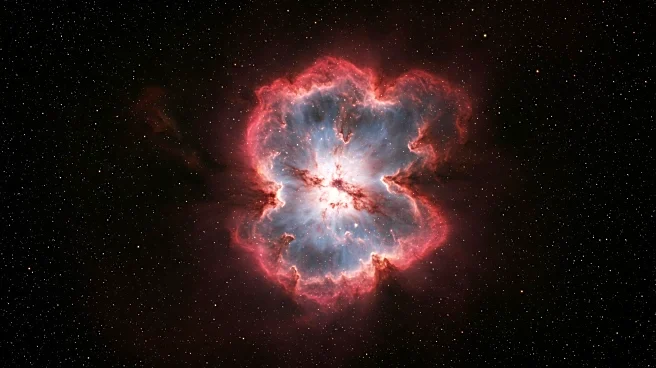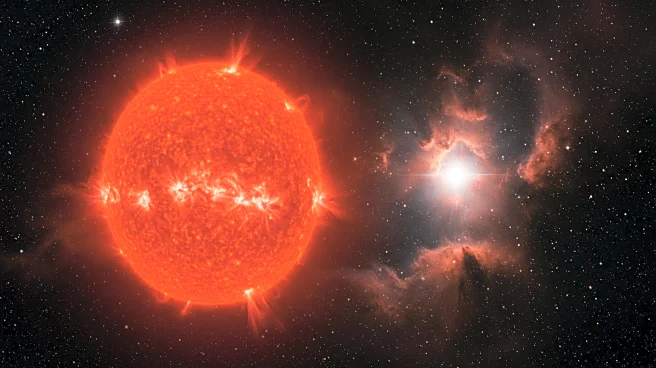What is the story about?
What's Happening?
Astronomers have identified a colossal molecular cloud within the Milky Way, weighing as much as 160,000 suns. This discovery, made using the Green Bank Telescope, reveals a structure located 23,000 light-years away, offering new insights into star formation and galactic evolution. The cloud, named M4.7-0.8, spans nearly 200 light-years and features two primary structures: the 'Nexus' and the 'Filament.' These formations indicate dynamic processes within the cloud, providing a rich avenue for astrochemical and dynamic studies. The discovery of potential star formation zones within the cloud adds further intrigue to this astronomical finding.
Why It's Important?
The identification of such a massive molecular cloud is significant for understanding the mechanisms of star formation and the lifecycle of galaxies. Giant Molecular Clouds (GMCs) are essential for star birth, influencing the evolution of galaxies like the Milky Way. By studying these clouds, astronomers can gain insights into the processes that shape cosmic structures over time. This knowledge is vital for comprehending the broader narrative of galactic evolution and the intricate dance of matter and energy that defines our universe.
What's Next?
Future observations of M4.7-0.8 are expected to reveal more about the mechanisms behind star formation and galaxy lifecycles. Astronomers will likely conduct multi-wavelength studies to construct a comprehensive image of the cloud's structure and dynamics. These efforts may lead to groundbreaking discoveries about the role of GMCs in galactic evolution, potentially redefining our understanding of the cosmos. As research continues, the potential for new insights into the universe's past and future remains vast.
AI Generated Content
Do you find this article useful?


